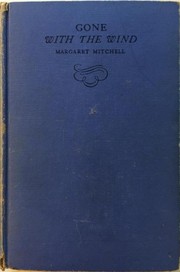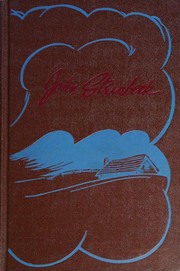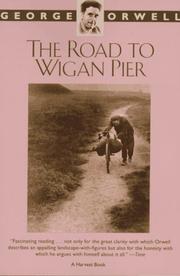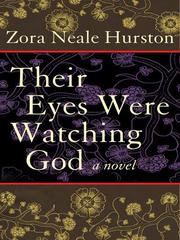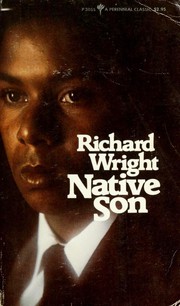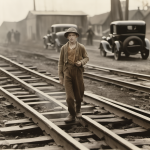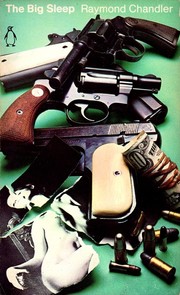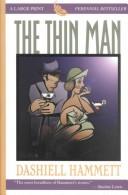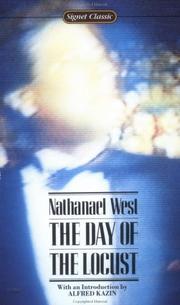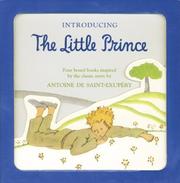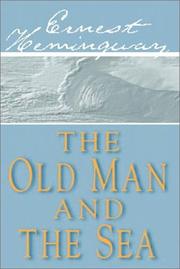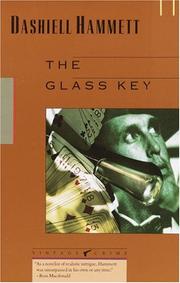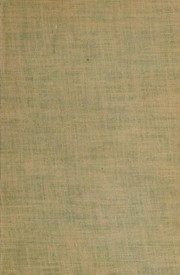Transport yourself back to the tumultuous era of the 1930s with these 20 captivating books that vividly capture the essence of the time. From the Great Depression to the rise of fascism, these books on the 1930s offer a glimpse into the social, political, and cultural landscape of the decade. Whether you’re interested in history, literature, or simply love a good story, these the 1930s books are sure to provide insight and entertainment.
Contents
- 1 20 Best Books About The 1930S
- 2 The Grapes of Wrath
- 3 To Kill a Mockingbird
- 4 The Great Gatsby
- 5 Brave New World
- 6 Gone with the Wind
- 7 Animal Farm
- 8 Of Mice and Men
- 9 The Road to Wigan Pier
- 10 Their Eyes Were Watching God
- 11 Native Son
- 12 The Big Sleep
- 13 The Hobbit
- 14 The Thin Man
- 15 The Day of the Locust
- 16 The Maltese Falcon
- 17 The Little Prince
- 18 The Old Man and the Sea
- 19 The Glass Key
- 20 The Sound and the Fury
- 21 Tropic of Cancer
- 22 Conclusion
- 23
- 24 Books about Asian American Experience: 2024's Best Titles
- 25 Discover the Best Pirates Non-Fiction Books in the 2024 Updated Edition
- 26 Unveiling the Best Inheritance Books in this 2024 Update
20 Best Books About The 1930S
The Grapes of Wrath
by John Steinbeck
The Grapes of Wrath, a book about the 1930s by John Steinbeck, follows the Joad family as they leave their drought-stricken Oklahoma farm during the Dust Bowl and set out for California in search of a better life. The novel captures the struggle and resilience of the American people during the Great Depression, depicting the harsh realities of poverty, prejudice, and exploitation. Steinbeck’s powerful storytelling and vivid descriptions paint a poignant picture of the era, offering a raw and unflinching portrayal of the human experience during the tumultuous times of the 1930s. The Grapes of Wrath remains a timeless and poignant exploration of social and economic injustice, making it a must-read for anyone interested in understanding the challenges faced by families during the Great Depression.
To Kill a Mockingbird
by Harper Lee
To Kill a Mockingbird, set in the 1930s, is a classic novel by Harper Lee that explores themes of racism, injustice, and morality in a small town in Alabama. The story is told through the eyes of Scout Finch, a young girl who learns about the harsh realities of life as her father, Atticus Finch, defends a black man accused of raping a white woman. The novel delves into the complexities of society and the human condition, challenging readers to confront their own prejudices and beliefs. Through vivid characters and poignant storytelling, To Kill a Mockingbird remains a timeless and thought-provoking book about the 1930s, with its enduring relevance and powerful message about compassion and empathy.
The Great Gatsby
by F. Scott Fitzgerald
The Great Gatsby is a quintessential ‘book on the 1930s’, capturing the allure and excess of the Jazz Age. F. Scott Fitzgerald’s masterpiece follows the enigmatic Jay Gatsby, a self-made millionaire, as he navigates the opulent world of Long Island’s elite. Narrated by Gatsby’s neighbor, Nick Carraway, the novel delves into themes of love, wealth, and the American Dream, against the backdrop of Prohibition-era New York. With its lavish parties, tangled relationships, and a tragic love story, The Great Gatsby remains a timeless ‘book about the 1930s’, offering a poignant commentary on the pursuit of happiness and the disillusionment of the era. Fitzgerald’s evocative prose and vivid characters continue to captivate readers, making this ‘the 1930s book’ an enduring classic.
Brave New World
by Aldous Huxley
Brave New World, a book about the 1930s, written by Aldous Huxley, is a dystopian novel set in a futuristic world where society is controlled by technology, conditioning, and a drug called soma. The story follows the lives of various characters as they navigate a world where individuality is suppressed, and people are engineered to fit into specific social classes. Huxley’s exploration of a society driven by consumerism, mass production, and instant gratification is a thought-provoking commentary on the potential consequences of unchecked technological advancement. The novel delves into themes of conformity, freedom, and the human spirit, offering a chilling glimpse into a future that may not be as far-fetched as it seems.
Gone with the Wind
by Margaret Mitchell
Gone with the Wind by Margaret Mitchell is a classic novel set in the tumultuous era of the 1930s. This sweeping saga follows the life of Scarlett O’Hara, a headstrong Southern belle, as she navigates the challenges of the Civil War and its aftermath. The novel captures the essence of the 1930s with its vivid portrayal of the Old South and the changing social dynamics of the time. With its rich historical backdrop and compelling characters, Gone with the Wind is a timeless book on the 1930s that delves into themes of love, loss, and resilience amidst the backdrop of a changing world.
Animal Farm
by George Orwell
Animal Farm is a classic allegorical novella by George Orwell, published in 1945. Set on a farm, the story revolves around a group of farm animals who rebel against their human farmer, hoping to create a society where the animals can be equal, free, and happy. The novel serves as a satirical commentary on the events leading up to the Russian Revolution of 1917 and the Stalinist era of the Soviet Union in the 1930s. Through the animals’ struggle for utopia, Orwell explores the corruption of power and the dangers of totalitarianism. It is a thought-provoking and timeless tale that continues to resonate with readers, offering a compelling and cautionary tale about the perils of political oppression and the abuse of power. This book expertly captures the complexities and challenges of the 1930s in a captivating and accessible manner.
Of Mice and Men
by John Steinbeck
Of Mice and Men by John Steinbeck is a classic book set in the 1930s that follows the journey of two drifters, George and Lennie, as they seek employment during the Great Depression. The story explores themes of loneliness, friendship, and the pursuit of the American Dream. Through Steinbeck’s vivid descriptions and compelling characters, readers are transported to the harsh realities of life during the 1930s. The novel delves into the complexities of human relationships and the struggle for survival in a time of economic hardship. With its timeless portrayal of human resilience and the challenges of a bygone era, Of Mice and Men remains a poignant and thought-provoking read for anyone interested in delving into a book about the 1930s.
The Road to Wigan Pier
by George Orwell
The Road to Wigan Pier by George Orwell is a compelling book about the 1930s that delves into the harsh realities of working-class life in Northern England during the interwar period. Orwell offers a vivid and eye-opening portrayal of the poverty, squalor, and social injustice that plagued the industrial towns and mining communities of the 1930s. Through his powerful prose, Orwell paints a stark picture of the deplorable living conditions and the struggles faced by the working class, shedding light on the economic hardships and social inequalities of the time. The book also explores Orwell’s own experiences living among the working poor, providing a deeply personal and insightful perspective on the 1930s era. The Road to Wigan Pier is a poignant and thought-provoking read that offers valuable insights into a tumultuous period in history.
Their Eyes Were Watching God
by Zora Neale Hurston
Their Eyes Were Watching God, written by Zora Neale Hurston, is a timeless classic that explores the life of Janie Crawford, a black woman living in the rural South during the 1930s. This captivating novel provides a vivid and intimate portrayal of Janie’s journey to self-discovery and independence, as she navigates through love, loss, and societal expectations. Hurston’s lyrical prose and rich storytelling immerse readers in the vibrant world of the 1930s, offering a poignant and powerful depiction of the African American experience during that tumultuous era. Their Eyes Were Watching God is a must-read for anyone seeking a compelling and profound exploration of love, identity, and the human spirit in the midst of the challenges of the 1930s.
Native Son
by Richard Wright
Native Son, a book on the 1930s by Richard Wright, follows the story of Bigger Thomas, a young African American man living in poverty on the South Side of Chicago. The novel explores the systemic racism and social injustice that Bigger faces as he navigates through the harsh realities of the 1930s. When Bigger accidentally kills a white woman, the novel delves into the psychological and emotional turmoil he experiences as he grapples with the consequences of his actions. Wright’s gripping narrative sheds light on the oppressive societal forces that shape Bigger’s life and his eventual fate. With its raw portrayal of the struggles faced by African Americans in the 1930s, Native Son is a powerful and thought-provoking book about the 1930s that continues to resonate with readers today.
The Big Sleep
by Raymond Chandler
The Big Sleep by Raymond Chandler is a classic hardboiled detective novel set in the 1930s. The story follows private detective Philip Marlowe as he is hired by a wealthy general to handle a case involving his wild daughter and a series of blackmail attempts. As Marlowe delves into the seedy underbelly of Los Angeles, he uncovers a web of deception, murder, and corruption. The novel is filled with gritty dialogue, atmospheric descriptions of the city, and complex characters that capture the essence of the 1930s. Chandler’s writing style and the immersive setting make The Big Sleep a compelling read for anyone interested in a gripping book on the 1930s.
The Hobbit
by J.R.R. Tolkien
The Hobbit, written by J.R.R. Tolkien, is a timeless book about the 1930s that follows the journey of Bilbo Baggins, a hobbit who is whisked away from his quiet life into a grand adventure. Set in a mystical land filled with dwarves, dragons, and wizards, this book on the 1930s takes readers on a thrilling quest to reclaim a treasure guarded by the fearsome dragon, Smaug. Along the way, Bilbo encounters trolls, goblins, and elves, and discovers courage and strength he never knew he possessed. With its captivating storytelling and rich world-building, The Hobbit is a classic tale of heroism and friendship that continues to capture the hearts of readers of all ages.
The Thin Man
by Dashiell Hammett
The Thin Man, a classic detective novel by Dashiell Hammett, is a captivating ‘book about the 1930s’ that follows the witty and charming former detective Nick Charles as he becomes embroiled in a murder mystery. Set against the backdrop of the ‘1930s book, the story is filled with the glitz and glamour of high society and the seedy underbelly of New York City. With its quick-witted dialogue and intricate plot, The Thin Man is a thrilling glimpse into the ‘book on the 1930s’ that will keep readers on the edge of their seats. Full of intrigue, suspense, and a touch of humor, this novel is a must-read for fans of classic detective fiction.
The Day of the Locust
by Nathanael West
The Day of the Locust by Nathanael West is a gripping book about the 1930s that delves into the dark underbelly of Hollywood during the Great Depression. The novel follows a cast of characters as they navigate the seedy world of aspiring actors, desperate dreamers, and disillusioned individuals, all searching for a glimmer of hope in the midst of despair. West’s vivid descriptions and haunting portrayal of the 1930s era captivate readers, painting a stark picture of the harsh realities and unfulfilled promises of the American Dream. The novel’s intense atmosphere and complex characters make it a compelling and thought-provoking read, offering a window into a tumultuous time in American history.
The Maltese Falcon
by Dashiell Hammett
The Maltese Falcon, a classic hard-boiled detective novel by Dashiell Hammett, is a gripping book about the 1930s that follows private investigator Sam Spade as he gets entangled in a web of deceit, betrayal, and murder in gritty 1930s San Francisco. When a mysterious woman hires Spade to track down her sister and a valuable statuette, he becomes embroiled in a dangerous game with a colorful cast of characters, including the enigmatic and ruthless Brigid O’Shaughnessy. As the plot twists and turns, Spade navigates the seedy underbelly of the city, encountering corruption, greed, and danger at every turn. Hammett’s vivid writing and taut storytelling make The Maltese Falcon a timeless book on the 1930s that continues to captivate readers with its atmospheric setting and complex characters.
The Little Prince
by Antoine de Saint-Exupéry
The Little Prince by Antoine de Saint-Exupéry is a timeless classic that takes readers on a whimsical journey through the wonders of the cosmos. Set against the backdrop of the 1930s, this beloved book about the 1930s follows the adventures of a young prince who travels from planet to planet, meeting a host of eccentric characters along the way. Through enchanting storytelling and charming illustrations, Saint-Exupéry weaves a tale that explores the complexities of human nature, the importance of love and friendship, and the beauty of innocence. The Little Prince is a poignant and thought-provoking work that continues to captivate readers of all ages, inviting them to ponder life’s big questions and embrace the magic of storytelling.
The Old Man and the Sea
by Ernest Hemingway
The Old Man and the Sea, a classic novel by Ernest Hemingway, is a timeless tale set in the 1930s. This Pulitzer Prize-winning novella tells the story of an aging Cuban fisherman, Santiago, who sets out on a journey to catch a giant marlin in the Gulf Stream. As Santiago battles the marlin for days, he reflects on his life, his struggles, and his determination to prove his worth as a fisherman. The book delves into themes of perseverance, courage, and the indomitable human spirit, making it a compelling read for anyone interested in the hardships and triumphs of life in the 1930s. Hemingway’s sparse prose and powerful storytelling make The Old Man and the Sea a must-read for anyone looking to delve into a book about the 1930s.
The Glass Key
by Dashiell Hammett
The Glass Key by Dashiell Hammett is a gripping book about the 1930s, filled with political corruption, betrayal, and moral ambiguity. Set in a gritty, shadowy world, the novel follows protagonist Ned Beaumont as he navigates the murky waters of power and influence in a city rife with crime and deception. When his friend, political boss Paul Madvig, becomes the prime suspect in a murder case, Beaumont is thrust into a dangerous game of loyalty and survival. Hammett’s sharp prose and intricate plot make The Glass Key a compelling book on the 1930s that delves into the seedy underbelly of society and the complexities of human nature.
The Sound and the Fury
by William Faulkner
The Sound and the Fury by William Faulkner is a complex and compelling book about the 1930s. Set in the American South, the novel delves into the lives of the Compson family, exploring themes of decay, loss, and the struggle for identity. Told from multiple perspectives, the story is fragmented and non-linear, reflecting the disintegration of the Compson family and the changing social landscape of the 1930s. Faulkner’s lyrical prose and experimental narrative style make this a challenging yet rewarding read, offering a unique insight into the complexities of human experience. The novel’s exploration of memory, time, and the impact of history on individual lives continues to resonate with readers today, cementing its status as a timeless classic.
Tropic of Cancer
by Henry Miller
Tropic of Cancer by Henry Miller is a groundbreaking book about the 1930s that captures the raw essence of the era. Set in Paris, the novel follows the story of a struggling writer living in a bohemian community, navigating through poverty, promiscuity, and existential angst. Miller’s unapologetic and explicit prose shocked readers when it was first published, leading to censorship and legal battles. However, the book’s candid exploration of sex, art, and societal disillusionment also earned it a reputation as a literary classic. Tropic of Cancer is a bold and unfiltered portrayal of the 1930s, offering a vivid and unflinching look at a tumultuous and transformative time in history.
Conclusion
Exploring The 1930S through literature offers a captivating glimpse into a tumultuous and formative decade. The 20 best books about the 1930s provide a rich tapestry of stories, characters, and historical events that continue to resonate with readers today. From the Great Depression to the rise of fascism, these books offer a deep understanding of the era’s complexities and challenges. Whether you’re interested in fiction, non-fiction, or historical accounts, this list has something for every avid reader seeking to delve into the compelling world of books about the 1930s.
Which The 1930S book is best?
The best book on The 1930S can vary with personal preference, but three widely recommended titles are:
- The Grapes of Wrath by John Steinbeck,
- To Kill a Mockingbird by Harper Lee,
- The Great Gatsby by F. Scott Fitzgerald.
Each offers valuable insights and could be a great starting point.
What are the best books to learn about The 1930S?
For those looking to learn about The 1930S, there is a wealth of literature that can provide a comprehensive understanding of the subject. Some of the most highly recommended books include:
- The Grapes of Wrath by John Steinbeck,
- To Kill a Mockingbird by Harper Lee,
- The Great Gatsby by F. Scott Fitzgerald,
- Brave New World by Aldous Huxley,
- Gone with the Wind by Margaret Mitchell,
- Animal Farm by George Orwell,
- Of Mice and Men by John Steinbeck,
- The Road to Wigan Pier by George Orwell,
- Their Eyes Were Watching God by Zora Neale Hurston,
- Native Son by Richard Wright
These books offer a range of perspectives on The 1930S, covering various aspects and approaches to the subject.
What are the best books on The 1930S?
The best books on The 1930S include:
- The Grapes of Wrath by John Steinbeck,
- To Kill a Mockingbird by Harper Lee,
- The Big Sleep by Raymond Chandler,
- The Hobbit by J.R.R. Tolkien,
- The Road to Wigan Pier by George Orwell,
- Animal Farm by George Orwell.
Each offers unique insights into the subject. While these books on the topic of The 1930S are highly regarded, it’s important to note that any list of ‘best’ books is subjective and reflects a range of opinions.
What are the best The 1930S books of all time?
Choosing the best The 1930S books of all time can vary depending on who you ask, but seven titles that are often celebrated include
- The Grapes of Wrath by John Steinbeck,
- To Kill a Mockingbird by Harper Lee,
- Gone with the Wind by Margaret Mitchell,
- The Road to Wigan Pier by George Orwell,
- Native Son by Richard Wright,
- The Hobbit by J.R.R. Tolkien,
- and The Big Sleep by Raymond Chandler.
Each of these books has made a significant impact in the field of The 1930S and continues to be influential today.





